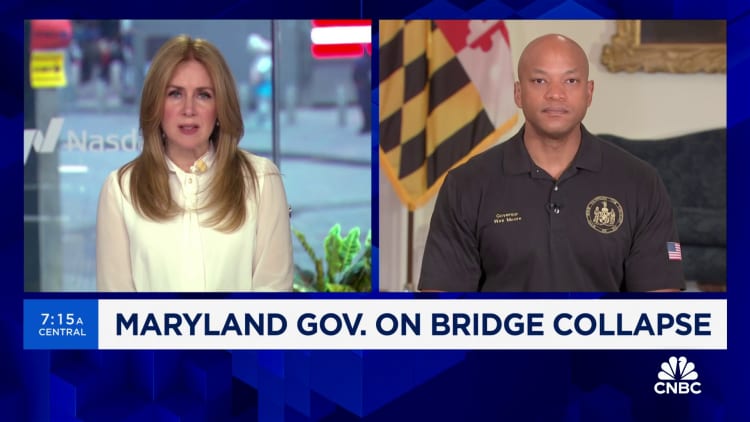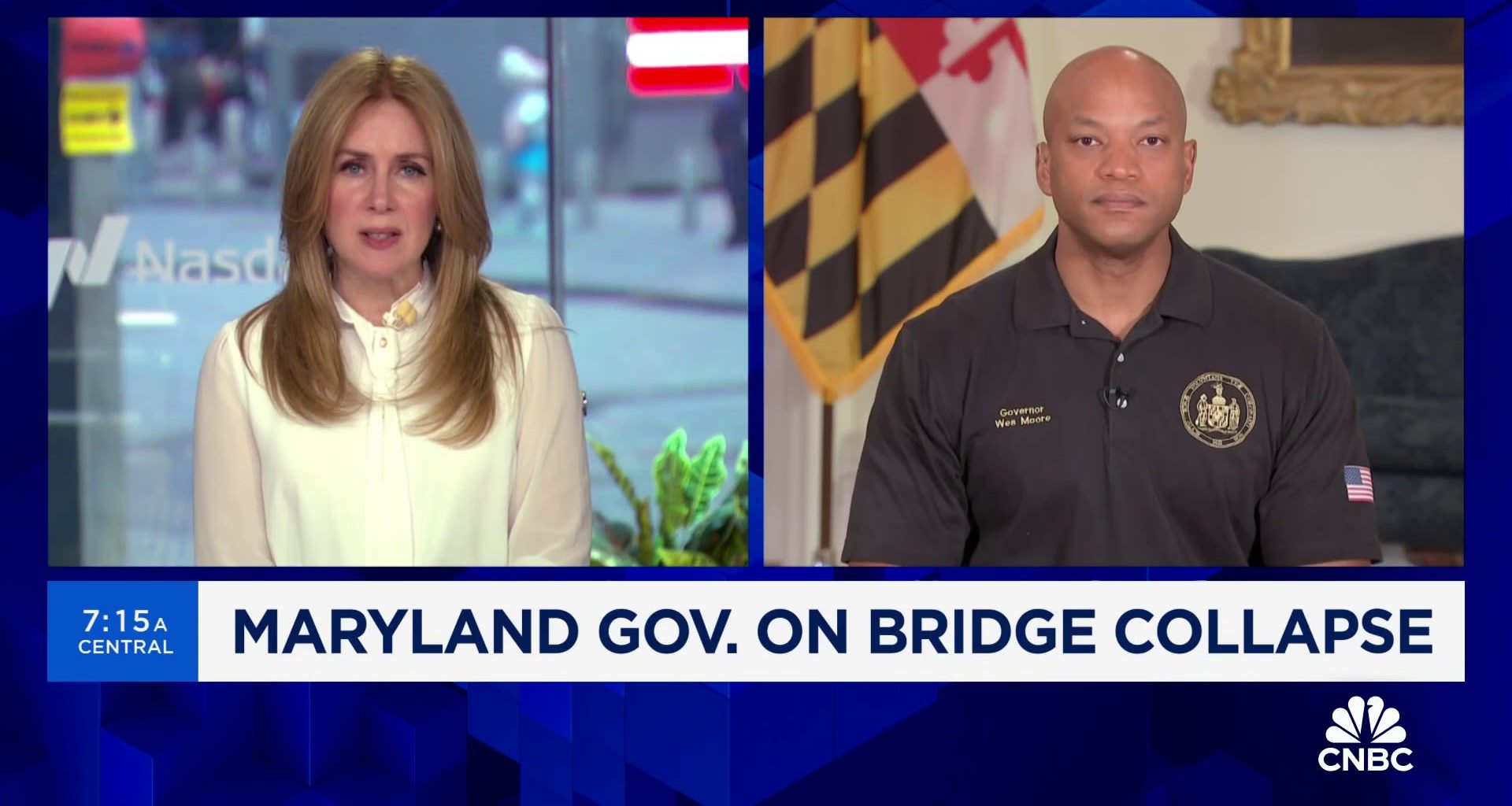A Key Bridge Response 2024 Unified Command image of response crews remove shipping containers using a floating crane barge after the cargo ship Dali struck and collapsed the Francis Scott Key Bridge, on April 7, 2024 in Baltimore, Maryland.
Handout | Getty Images News | Getty Images
The process of removing shipping containers from the 984-foot-long Dali has begun, but it is expected to take weeks to complete the job, tow the listing ship, and get the Port of Baltimore reopened for marine traffic after the bride collapse which occurred on March 26.
Seven containers have been removed since Unified Command started the process on Sunday to clear up the canal and ultimately reopen for container traffic, a spokesperson for the Key Bridge Response 2024 Joint Information Center told CNBC. The initial goal is to remove 10 to 12 containers to create a safe working area for the crews involved in recovery efforts for missing workers and removal of debris. The containers that are being removed are leaning over on the port side of the Dali’s bow and pose a risk to crews working in the area.
Unified Command is comprised of Synergy Marine, the management company of the Dali, the U.S. Coast Guard, U.S. Army Corps of Engineers, Maryland Department of the Environment, Maryland Transportation Authority, and Maryland State Police.
Approximately 140 containers in all are expected to be removed to lighten the Dali so the grounded vessel can be refloated and moved by tugs. It is expected to take approximately two weeks to unload all of the containers.
The first seven containers were on a single barge and taken to Sparrows Point, the former site of a large industrial complex owned by Bethlehem Steel. Sparrows Point is a 3,100 acre peninsula reaching into Baltimore Harbor. The JIC said the containers will stay at Sparrows Point until “further disposition is approved and coordinated.”
Debris removed from the Key Bridge collapse site being checked by crews at Sparrows Point.
Key Bridge Response 2024 Unified Command | U.S. Coast Guard Petty Officer 3rd Class Erin Cox
The barges being loaded with containers all have different container-carrying capacities, according to JIC.
The logistics details for cleared containers are still being discussed, with the JIC telling CNBC its “current intent” is to send them to the CSX Terminal.
A CSX spokesperson told CNBC the freight rail company has expressed a willingness and desire to help with the recovery efforts in Baltimore, and said conversations are ongoing, but added, “We have no significant updates to report at this time.”
CSX was the first rail to start a rail service for diverted containers resulting from the accident and closure of the Port of Baltimore.
Once the Dali is refloated and no longer listing, tugs will move the vessel to the CSX terminal at the Port of Baltimore. It is still to be determined how many tugs will be needed to move the Dali, according to the JIC. “That is currently pending and is being planned out,” it said in an email to CNBC.
The removal of the debris and the vessel is key to the reopening of the Port of Baltimore, which is the largest port for auto imports and exports in the country, as well as a key trade hub for clothing, household goods, construction materials, electronics and appliances, and produce. Last week, engineers said the goal is to restore “normal capacity” access to the main 700-foot-wide by 50-foot-deep channel and the Port of Baltimore by the end of May.
Aaron Roth, a retired Coast Guard captain and Chertoff Group principal, previously told CNBC there will be one tell-tale sign of when the channel is ready to open.
“Once you see plans of moving the Dali away from the port, that’s when you know the channel is ready to be open,” Roth said. “In the meantime, just like we saw with the Red Sea, the system will adjust. The economy knows best and the economy will absorb it,” he said.
The new channel is currently open for smaller commercial vessels, including those involved in the recovery effort, that are remarkably lighter and smaller. The size of vessels the Coast Guard is allowing is 96 feet in length, compared to the 984-foot-long Dali, the vessel that struck the Francis Scott Key Bridge after losing navigational control and destroyed the key piece of infrastructure.
A tugboat pushing a fuel barge was the first vessel to use the alternate channel to bypass the wreckage of the bridge. The barge was carrying jet fuel for the Department of Defense first bound for Delaware’s Dover Air Force Base.

Read More: World News | Entertainment News | Celeb News
CNBC










